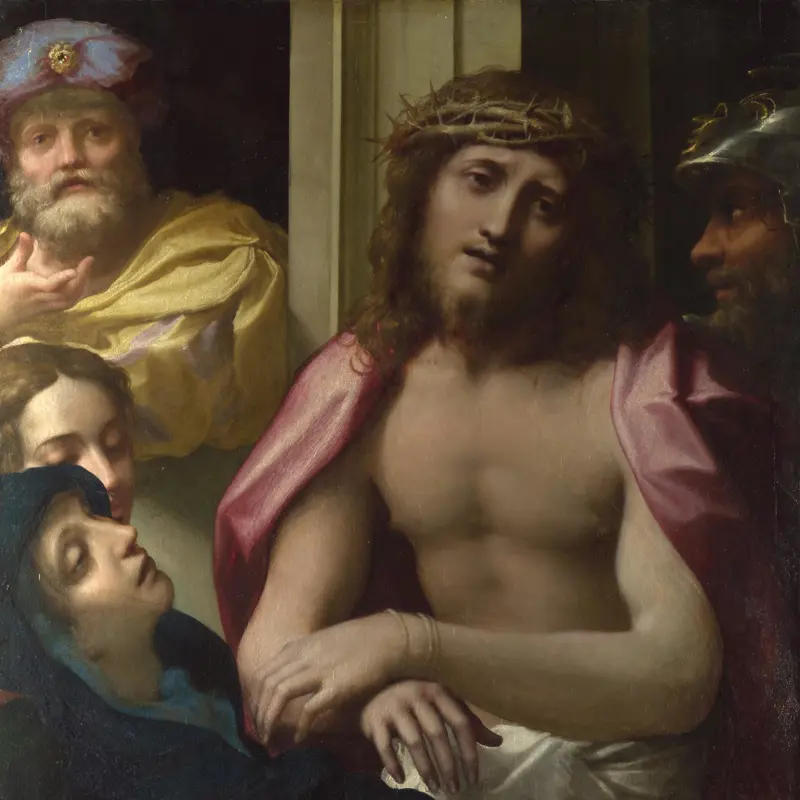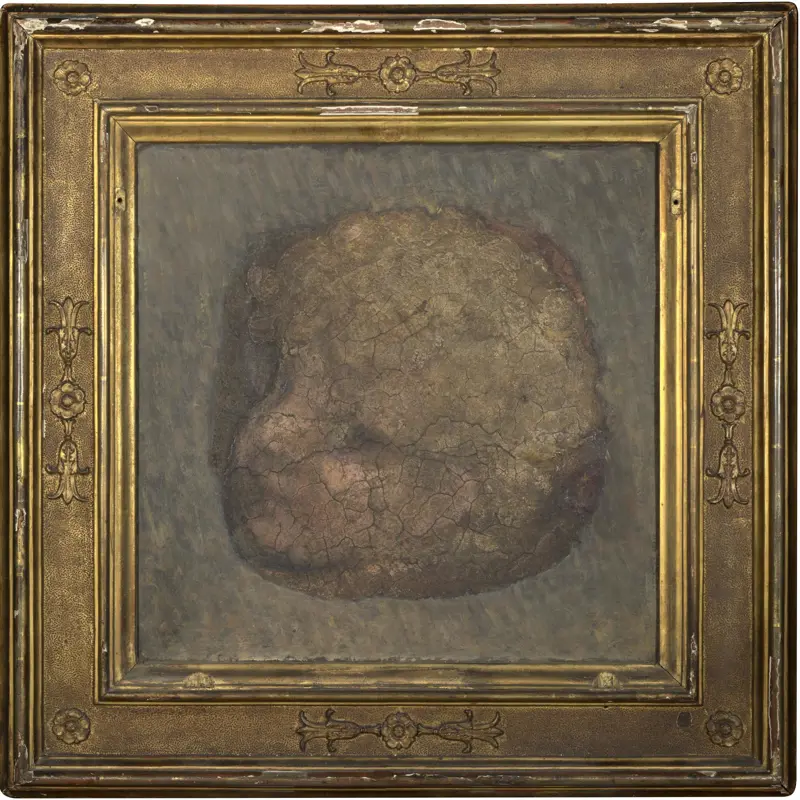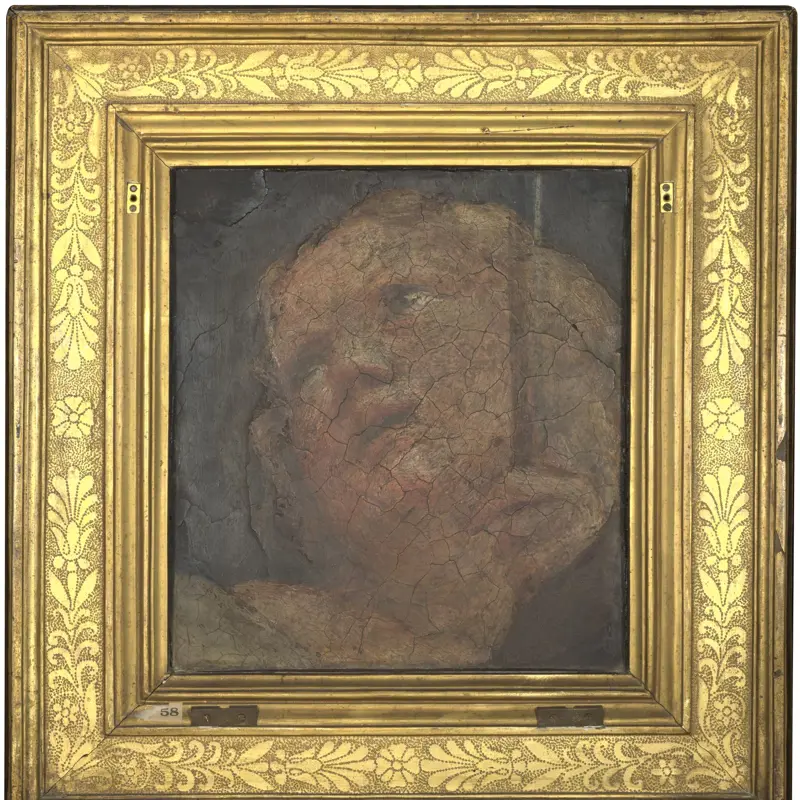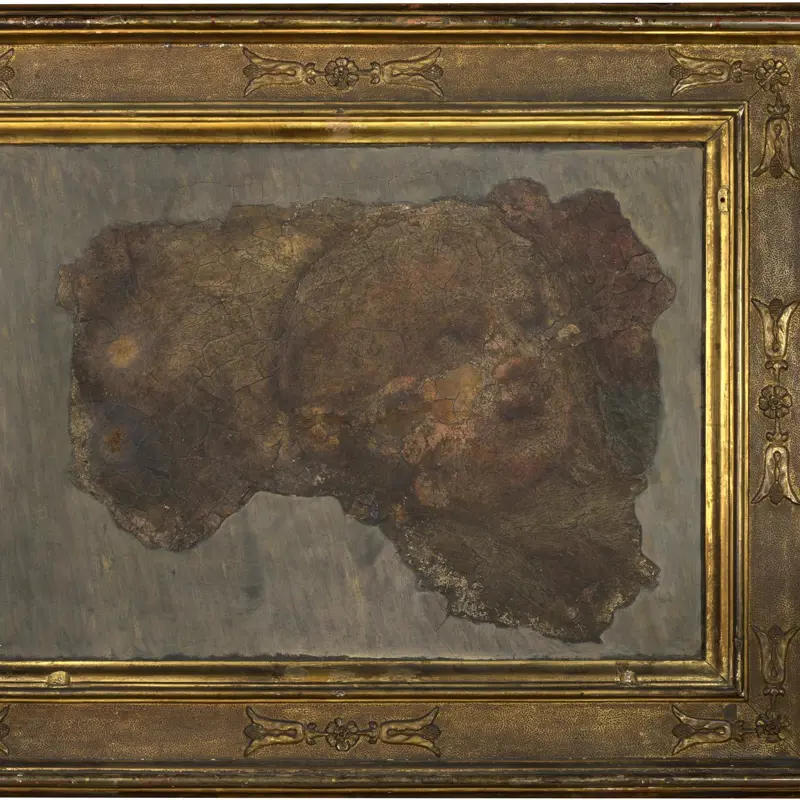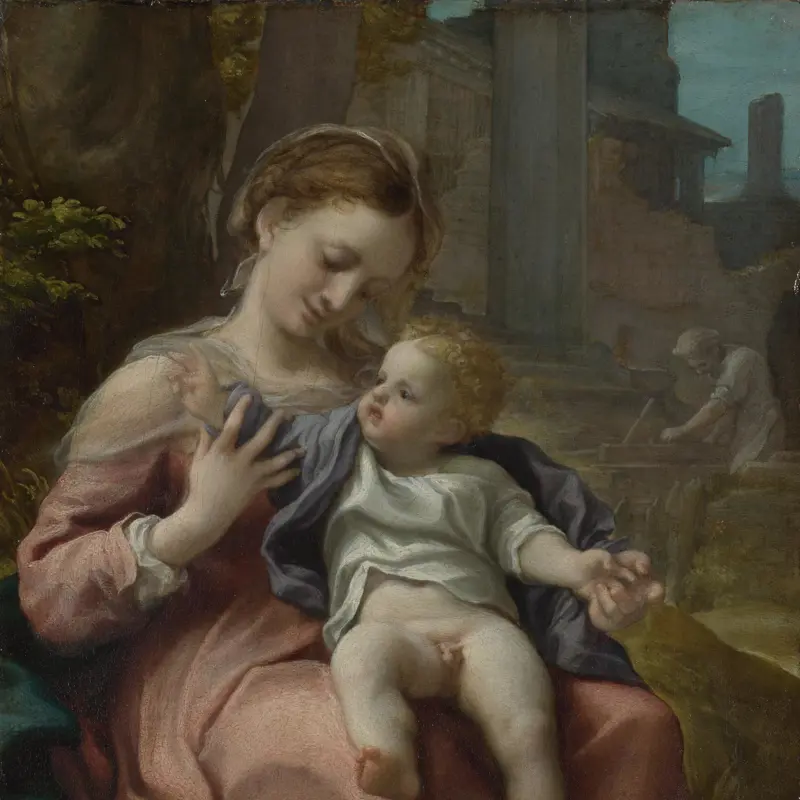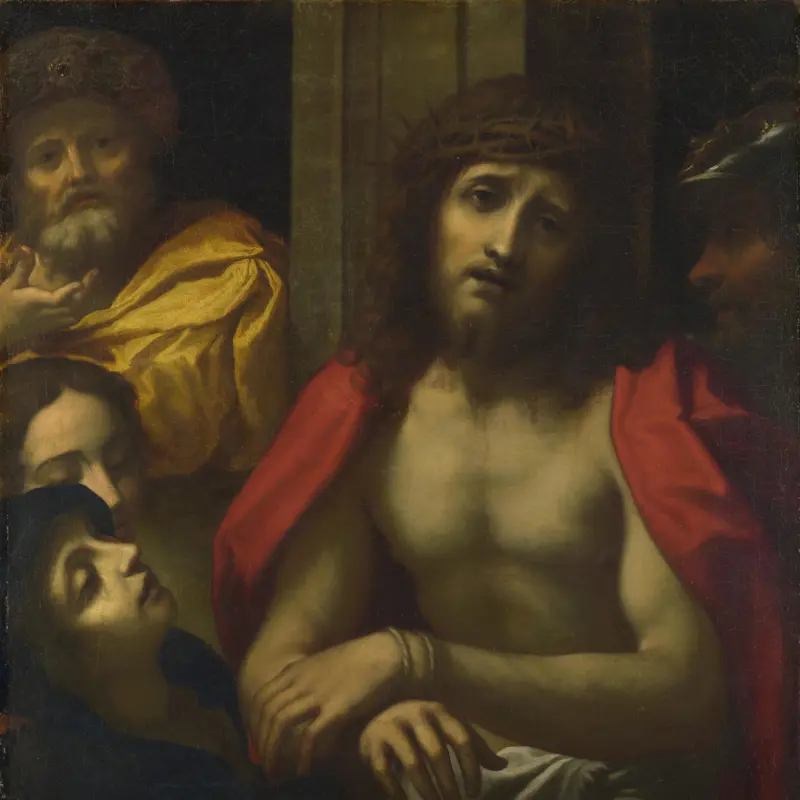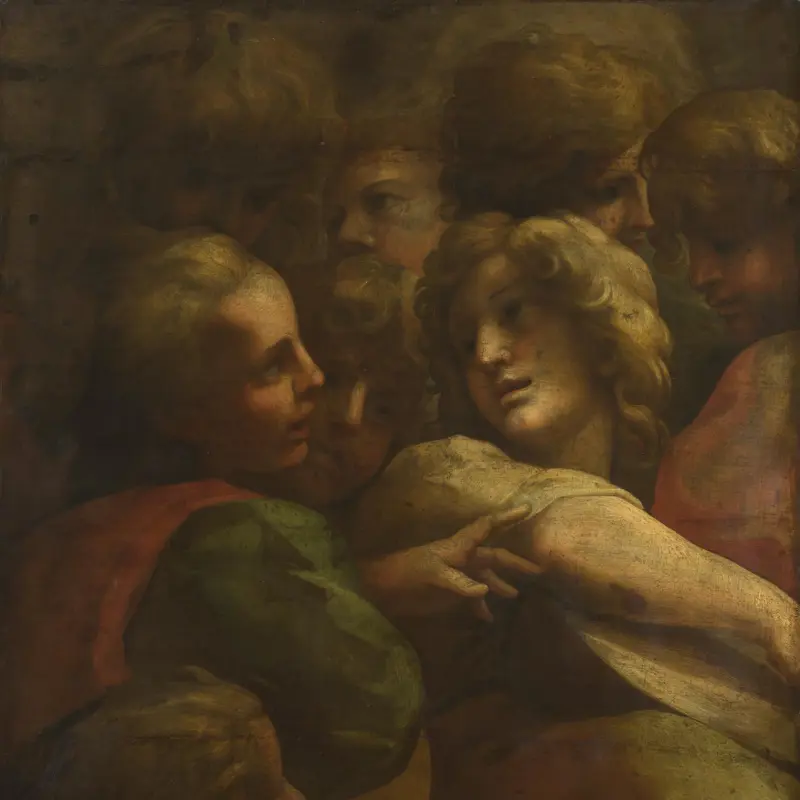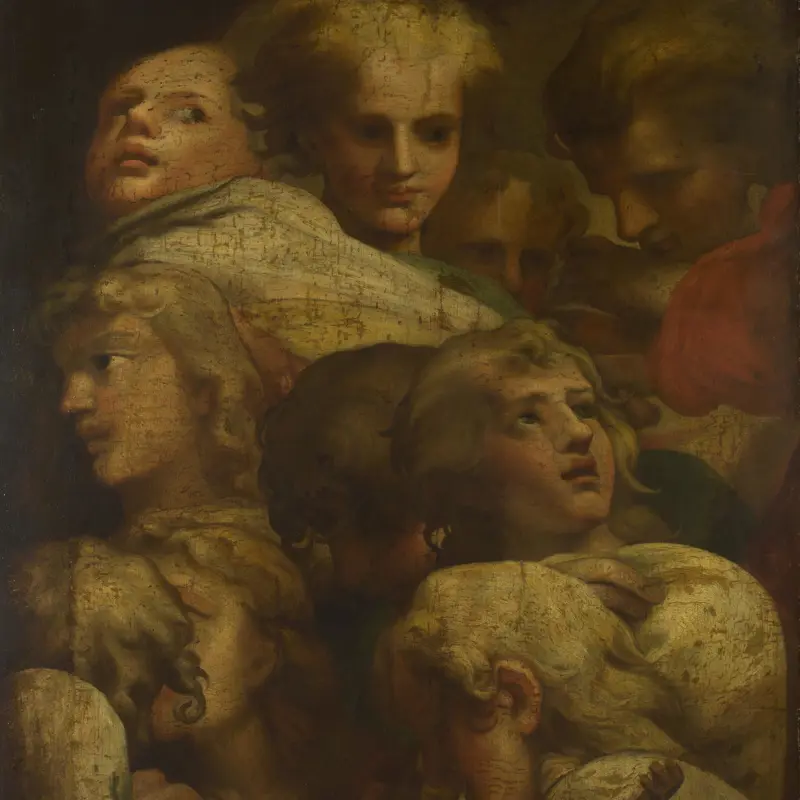After Correggio, 'The Agony in the Garden', probably about 1640-1750
About the work
Overview
This painting is an early copy of one of the most celebrated of Correggio’s small religious paintings. For a long time it was regarded as Correggio’s genuine version, even after the arrival in London of the original from the Spanish Royal Collection (now in Apsley House, London). The Apsley House painting was damaged by fire and the National Gallery’s copy records the landscape’s original appearance.
Following the Last Supper, Christ kneels in the Garden of Gethsemane and appeals to God to be spared from his imminent suffering and death. In this startling composition, the angel and Christ are placed daringly close to the left edge to allow for an expansive nocturnal landscape with dramatic lighting effects. On the right, the apostles sleep on the ground, unaware of Christ’s turmoil. The light that radiates from Christ himself is brighter than the dawn, recalling his words: ‘I am the light of the world’ (John 8: 12).
Key facts
Details
- Full title
- The Agony in the Garden
- Artist
- After Correggio
- Artist dates
- Active 1494; died 1534
- Date made
- Probably about 1640-1750
- Medium and support
- Oil on wood (probably poplar)
- Dimensions
- 38.1 × 41.9 cm
- Acquisition credit
- Bought, 1824
- Inventory number
- NG76
- Location
- Not on display
- Collection
- Main Collection
- Previous owners
Provenance
Additional information
Text extracted from the ‘Provenance’ section of the catalogue entry in Cecil Gould, ‘National Gallery Catalogues: The Sixteenth Century Italian Schools’, London 1987; for further information, see the full catalogue entry.
Bibliography
-
1823J. Young, A Catalogue of the Celebrated Collection of Pictures of the Late John Julius Angerstein, Esq: Containing a Finished Etching of Every Picture, and Accompanied with Historical and Biographical Notices, London 1823
-
1860W. Bürger, Trésors d'art en Angleterre, Brussels 1860
-
1871J. Meyer, Correggio, Leipzig 1871
-
1878Atti della Società di Archeologia e Belle Arti per la Provincia di Torino, Torino 1878
-
1883J.P. Richter, Italian Art in the National Gallery, London 1883
-
1901E. Wellington, A Descriptive and Historical Catalogue of Pictures and Sculpture at Apsley House, London 1901
-
1907G. Gronau, Correggio, des Meisters Gemälde in 196 Abbildungen, Stuttgart 1907
-
1962Gould, Cecil, National Gallery Catalogues: The Sixteenth Century Italian Schools (excluding the Venetian), London 1962
-
1975C. Gould, Delaroche and Gautier: Gautier's Views on the 'Execution of Lady Jane Grey' and on other Compositions by Delaroche, London 1975
-
1976C. Gould, The Paintings of Correggio, London 1976
-
1978A. Macintyre and K. Garlick (eds), The Diary of Joseph Farington, vol. 5, New Haven 1978-1984
-
1982C.M. Kauffmann, Catalogue of the Paintings in the Wellington Museum, London 1982
-
1987Gould, Cecil, National Gallery Catalogues: The Sixteenth Century Italian Schools, London 1987
-
2001
C. Baker and T. Henry, The National Gallery: Complete Illustrated Catalogue, London 2001
About this record
If you know more about this work or have spotted an error, please contact us. Please note that exhibition histories are listed from 2009 onwards. Bibliographies may not be complete; more comprehensive information is available in the National Gallery Library.

